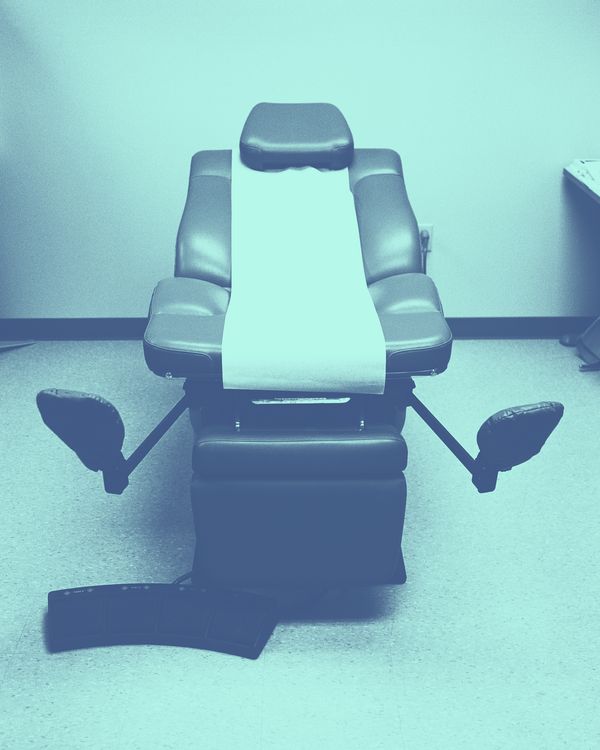
With elective egg-freezing technology on the rise, companies are looking to cash in. What was once considered the last resort of women in their late 30s and 40s is increasingly an option elected by women in their 20s and 30s, many of whom have normal fertility and no near-future plans to get pregnant, and numerous fertility clinics and start-ups have materialized to meet (and perhaps encourage) that demand.
One such clinic is Kindbody, which the Verge called “the SoulCycle of fertility,” presumably because their theme is yellow and because they’re incredibly thirsty for clientele. Kindbody, like Mister Softee, is largely run out of a van, though it has one stationary location so far, in midtown Manhattan. From both, according to The Verge, the company offers free testing for the anti-Müllerian hormone (or AMH), which they tout as a helpful tool in evaluating a woman’s fertility. But last year, a study found the hormone test ineffective in assessing the fertility of presumed-healthy women between 30 and 44.
So what, if anything, does the AMH test really tell us? The Cut talked to Alan Copperman, an OB-GYN, and director of the Division of Reproductive Endocrinology and Infertility at Mount Sinai, to learn more.
What is the anti-Müllerian hormone?
“It’s a hormone made by the ovaries and all the cells that surround the egg inside the ovaries,” explains Copperman. In that sense, AMH is a proxy for eggs themselves. “If you have a lot of eggs, you’re going to have a high amount of AMH, and if you don’t have as many eggs, you’re going to have a low amount of AMH,” says Copperman.
What is the normal range for AMH?
Typically, says Copperman, any score above one is considered “normal,” while anything less than one might be considered low, and suggests a somewhat depleted supply of eggs.
Importantly, this number can change — while a woman’s fertility (and AMH level) does inevitably decline over decades, her AMH level can change (even increase) month to month, due to factors like weight loss, or taking the birth control pill, says Copperman.
What does it mean if my AMH is less than one?
Just as a score over one is not a guarantee you’ll have no trouble getting pregnant, neither is a score below one a guarantee you won’t. “The concept of fertility is more of a continuous variable than a binary one,” says Copperman. “Most people are not either fertile or infertile. Most people have good fertility, and then not-as-good fertility over time.”
Copperman expressed concern that women who receive AMH results from boutique pop-ups like Kindbody might be unduly alarmed by their results, and that those pop-ups may be unequipped to educate them thoroughly. “Say you’ve got a 35-year-old who’s told that over one is good and under one is bad, and she comes in at 1.1. Now, is that supposed to make her nervous, or should that be reassuring? Should she freeze her eggs, or should she wait for it to get bad? If she waits for it to get bad, is it too late?” he says. “The key to this whole story is having real conversations, and understanding one’s own reproductive future and goals.”
Is one’s AMH score a reliable indicator of one’s fertility?
Not necessarily. One recent study found that AMH was not a determining factor in IVF outcome for women under 35. Women over 35 with higher AMH levels had significantly higher IVF live birth rates than women over 35 with lower AMH levels, which suggests the test may be most valuable at the point at which one’s fertility is in sharp decline. Before that, age itself remains the most important determining factor in predicting a woman’s fertility.
How do I learn more about what my AMH level means?
While Copperman is in favor of any measures that put more information in women’s hands, he says it’s important to consider factors like the AMH within the context of each individual’s history. “We have to make sure that if there’s going to be a direct-to-consumer test in a store, I, as a fertility specialist, just want to make sure the patients are getting the right counseling, and understand the real costs and the accuracy and the validity of the tests,” he says. AMH may be one part of the equation, but Copperman calls fertility “multivariate calculus.” Pop-up clinics that provide AMH testing may be convenient, and can be a jumping-off point, but a fuller understanding of one’s fertility incorporates family history, genetic testing, ultrasounds, desired number of children (and timing of births), and more — and, for now, that’s something that requires a trip to an OB-GYN.
“There is awareness being raised if people on the street corner see AMH tests for sale, because maybe they’ll ask questions, and we’ll start conversations, and there will be less shame or secrecy around a woman’s wanting reproductive autonomy,” says Copperman. “Anything that increases conversation I look at as a positive, but I want to err on the side of over-explaining things to patients and making sure people aren’t falsely scared, or falsely reassured, because both could actually have negative consequences.”